Ancient Mesopotamia is one of the oldest civilizations to develop religion and honour numerous pantheons. The deities had humanlike forms who reacted to stimuli of reasons and emotions.
Every city-state worshipped and honoured different deities or the same deity with other names.
Likewise, the city-state of Sumer also had a few significant deities worshipped by every single person. Some of the significant deities included An, Inanna, Shala, Utu, and Enki.
Deities that are mentioned here are the original deities of the city Sumer and were worshipped and honoured by the Sumerians. But, their cult was not limited to one city instead flourished to other cities including Assur, Akkad, and Babylon.
All of the deities were associated with a particular responsibility or power. Some of them had more than one responsibility or power.
You will know more about the 10 major primary deities of Sumerians in this article.
10. An
Content
God of Sky
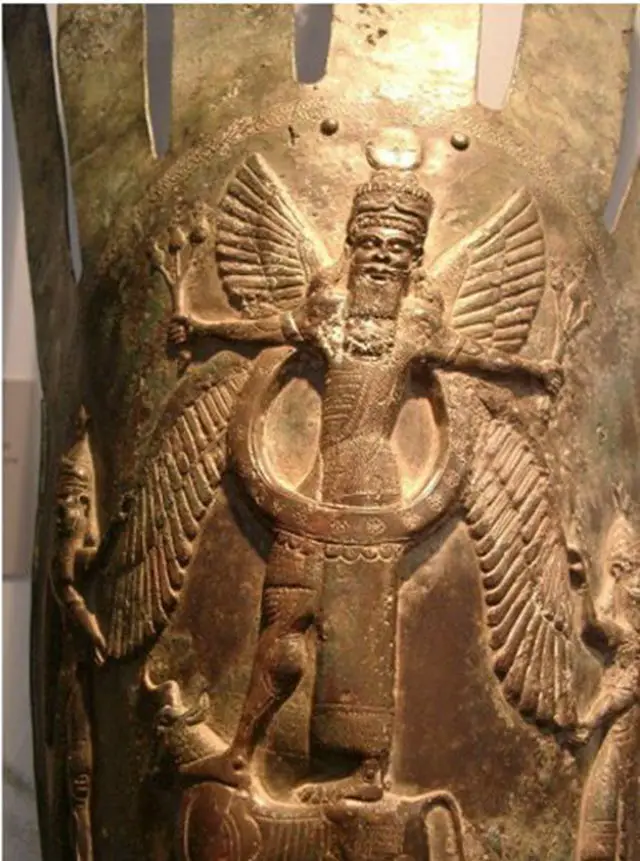
Source: Wikimedia Common
An, also known as Anu was the ancestor and the most respected father of all gods. He was the son of Kishar and Anshar and had five children, namely Enlil, Enki, Baba, Nidaba, and Nikikurga.
God of Sky was primarily the Sumerian deity and later worshipped and honoured by Akkadians. He was named as An by the Sumerians whereas changed to Anu by the Akkadians.
Sumerians considered him as the God of heaven who maintained all aspects of existence. Although numerous deities came into existence after him, his impact and power did not leave people until later.
Besides the people of Sumer, King Sargon of Akkad also had massive respect for the God of Sky as he believed him to have helped him during his conquest.
Likewise, other famous gods, including Assur, Marduk, and Enlil, also showed tremendous respect and believed to have been blessed by Anu.
9. Inanna
Goddess of love and procreation
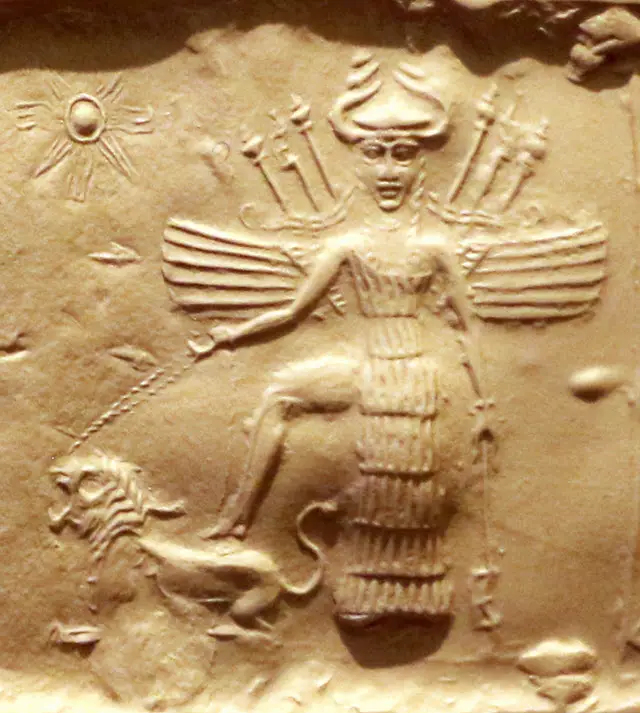
Source: Wikimedia Common
Inanna, also known as Ishtar, was the prominent goddess from 3500 BC to the 5th Century BC.
Like every other deity of Sumer, she was primarily the goddess of Sumerian who was later adopted, worshipped, and honoured by other cities including Assur, Akkad, and Babylonia.
People of these cities changed her name from Inanna to Ishtar. Since then, she is known by two names and worshipped in many towns with massive honour. She was the queen of gods and heavens for the Akkadians.
Inanna was the goddess of love and procreation, and along with this, she was associated with warm political power and justice.
Despite her powers, responsibilities, and association, she was sometimes portrayed as a short-tempered and spoiled personality in a few myths. However, she is believed to have always fought for justice and love.
8. Shala
Goddess of grain and compassion
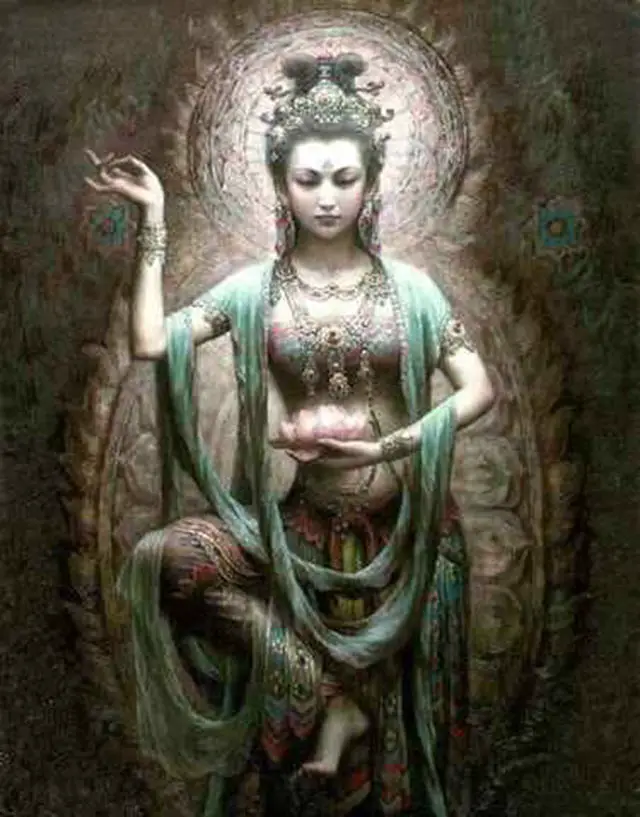
Source: Wikimedia Common
Shala was a Sumerian goddess whose cult was later formed and honoured in many cities of ancient Mesopotamia including Akkad, Assur, and Babylonia.
She was the goddess of compassion and grain. And, her significant symbol was the grain showing the importance of agriculture in Sumer and ancient Mesopotamia.
Apart from these associations, she was also associated with the constellation Virgo. Other six deities were associated with each of the seven planetary movements.
The goddess of compassion was portrayed in two forms, one of them showed her carrying double-headed mace embellished with lion heads. Whereas the other showed her being borne atop one or more than one lionesses.
7. Ereshkigal
Goddess of the underworld
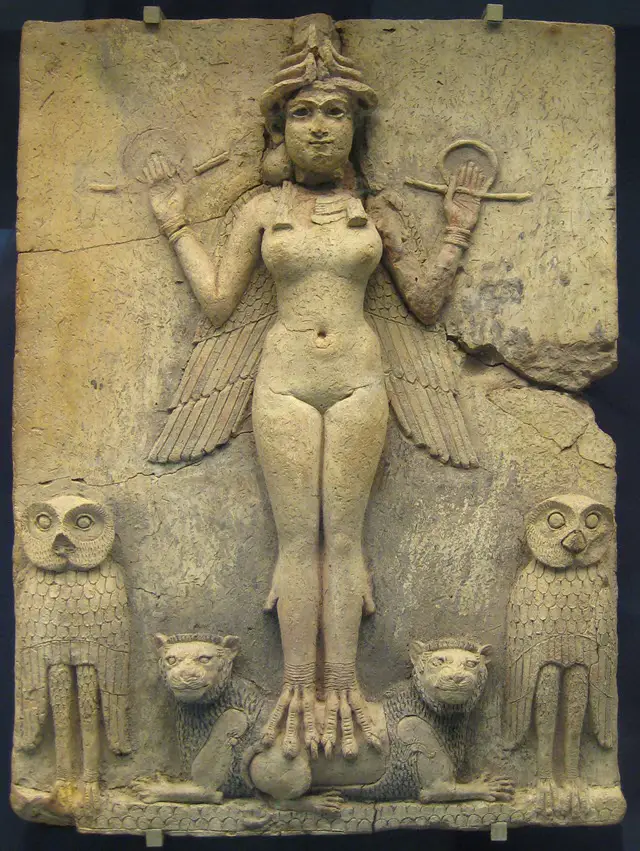
Source: Wikimedia Common
Ereshkigal, also known as Allattu and Irkalla, is the Sumerian goddess ruling the underworld. However, the name meant the Queen of the Great Below.
She was the daughter of Nanna-Suen and Ningal and had three siblings, namely Utu, Inanna, and Ishkur.
Ereshkigal was believed to be the Queen of the dead who lay beneath the mountains of Sunset. The souls of the dead ate dust and drank muddy puddles beneath the earth surface.
The goddess of the underworld had the power to rule these souls of the dead from Ganzir, her palace located at the entrance to the underworld.
Numerous myths, tales, and poems mention her and her siblings. Some of the famous works mentioning her include The Death of Ur-Nammu and The Descent of Inanna.
6. Utu
God of the divine justice and Sun

Source: Wikimedia Common
Utu was the son of Nanna and Ningal and was known by many names including Shamash, Samas, and Babbar.
Like every deity, he was also associated with many powers which include divine justice, Sun, humanity, kindness, and generosity. He was powerful enough to influence others with humankind and justice.
The people of Sumer honoured Utu as one the most powerful gods mainly for being associated with Sun. There are numerous temples built in different parts of Sumer to honour him.
All of the temples built in honour of God Utu are known as E-Babbar meaning shining or white house. Most of these temples are located in Eridu, Sippar, and Larsa.
5. Geshtinanna
Goddess of agriculture, fertility, and dream interpretation
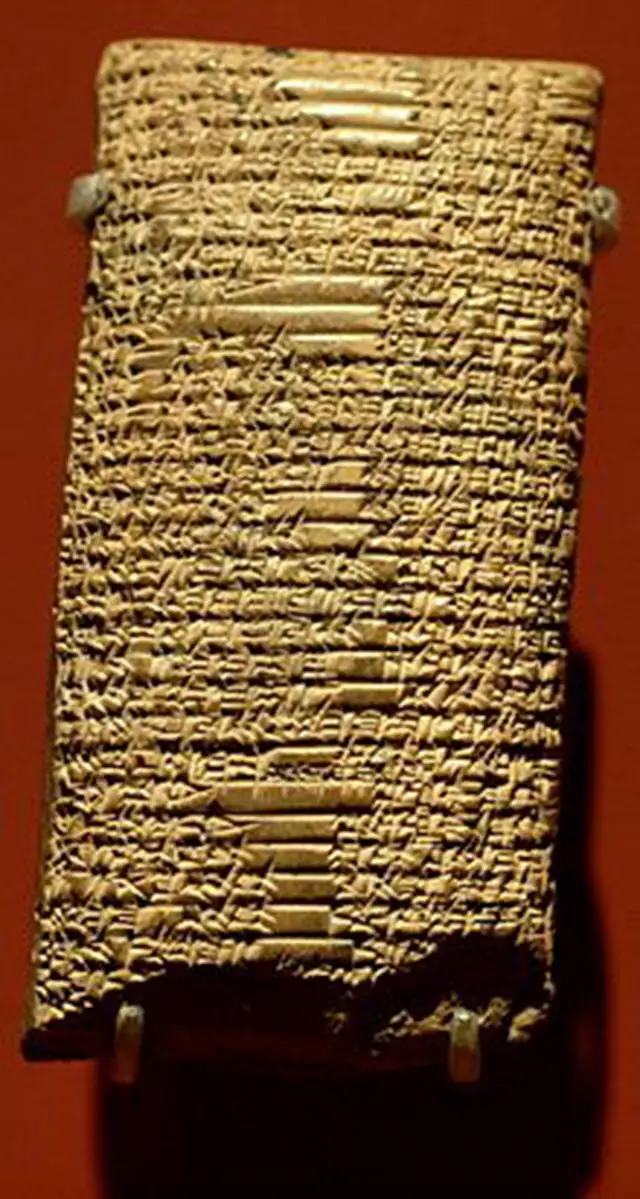
Source: Wikimedia Common
Geshtinanna, also known as Geštinanna or Ngeshtin-ana, was the Sumerian goddess. She was the daughter of Ninhursag and Enki and was married to Ningisida.
Although she was originally the goddess of Sumer, Akkadians also worshipped and honoured her as their respected deity. However, her cult began disappearing during the Old Babylonian period.
Geshtinanna was mostly worshipped in Isin, Uruk, and Nippur. Numerous myths and tales were there mentioning her and her associations.
She was mentioned to be responsible for the fertility of the Earth from Spring to Fall. And, for the remaining six months, her brother Dumuzid would come to the Earth and take over her responsibility.
4. Enki
God of freshwater and wisdom
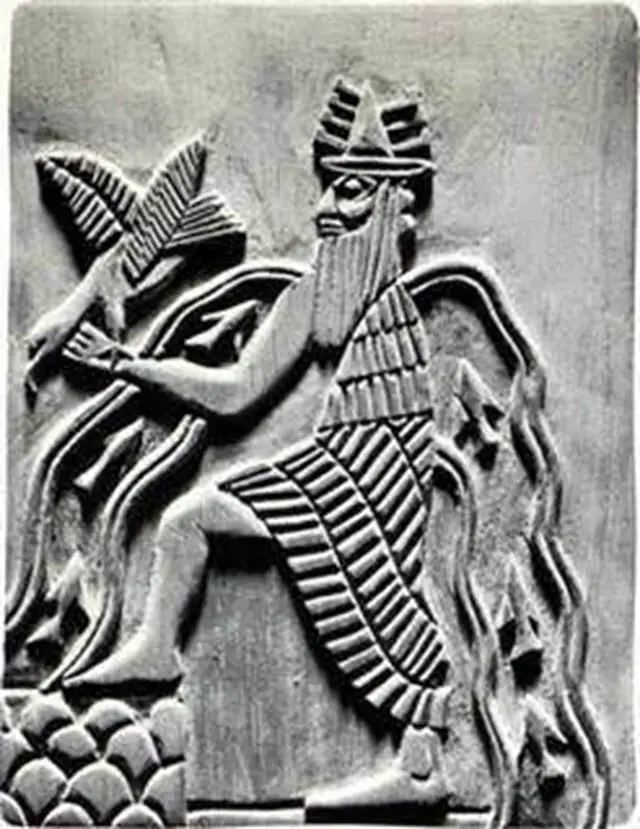
Source: Wikimedia Common
Enki, also known as Ea and Nudimmud and his name differed depending on the cities he was worshipped. However, his original name was Enki and was primarily worshipped in Sumer.
He was later adopted, honoured, and worshipped by Akkadians and Babylonians. And, Enki came to be one of the most important deities for the Akkadians.
God of freshwater was the son of An, the sky god so, he also had similar power like his father. Governing heaven, atmosphere, and Earth were the essential powers he owned.
Besides being known as the God of freshwater and wisdom and having powers like his father, he was associated with many other influences. Those powers include the power of intelligence, trickery, crafts, magic, art, exorcism, and fertility.
3. Enlil
God of Air
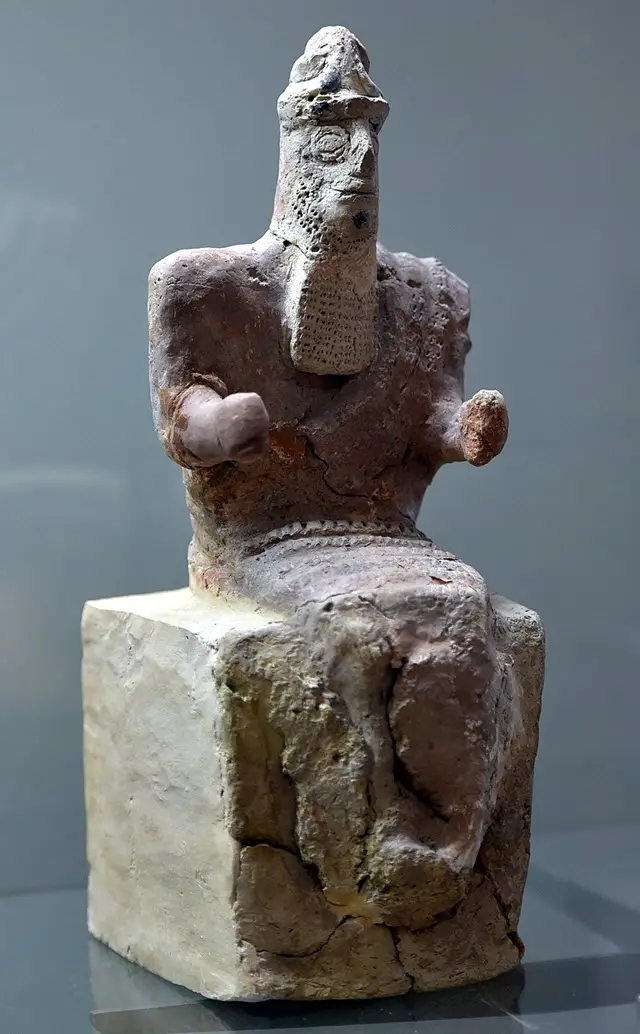
Source: Wikimedia Common
Enlil, also known as Elil, is the primary God of Sumerian who was later worshipped by Babylonians, Akkadians, Hurrians, and Assyrians. He was worshipped from c.2900 BCE until 1750 BCE.
The God of Air is one of the most powerful deities of Sumer and first started being worshipped from one of the ancient cities of Sumer, namely Nippur.
Enlil was the son of the supreme God, Anu and governed Earth, heaven, universe, sky, and atmosphere. He was worshipped in many temples located in cities of Sumer, mainly Nippur and later in cities of Akkad, Assur, and Babylon.
As all the deities, Enlil was also associated with numerous powers which include Air, wind, storms, and the whole Earth. Besides these associations, he was powerful enough to control destiny, humanity, and fates.
2. Nanna-Suen
God of wisdom and moon
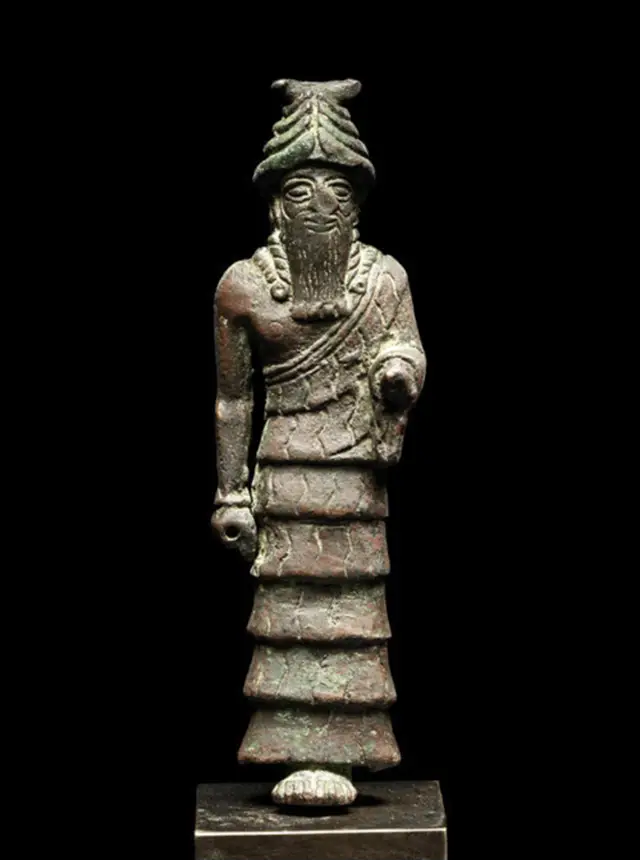
Source: Wikimedia Common
Nanna-Suen is one of the oldest gods of Sumer and ancient Mesopotamia. He is also known as Nanna, Sin, Namrasit, Inbu, and Asimbabbar depending on the cities he was honoured.
He was the son of Ninlil and Enlil and was married to Ningal. They had four children together, namely Inanna, Utu, Ereshkigal, and Ishkur.
People of Sumer started worshipping him from a very early time, before c.3500 BCE. Later he was worshipped by the people of other cities including Assur, Akkad, and Babylon.
Many temples were also built in honour of the God of the moon out of which the temple located in Ur was the most famous one. The responsibility of the temple was given to a very renowned priestess named Enheduanna.
Like every deity, Nanna-Suen was also associated with many powers which included wisdom, moon, justice, and humankind.
1. Ninhursag
Goddess Fertility
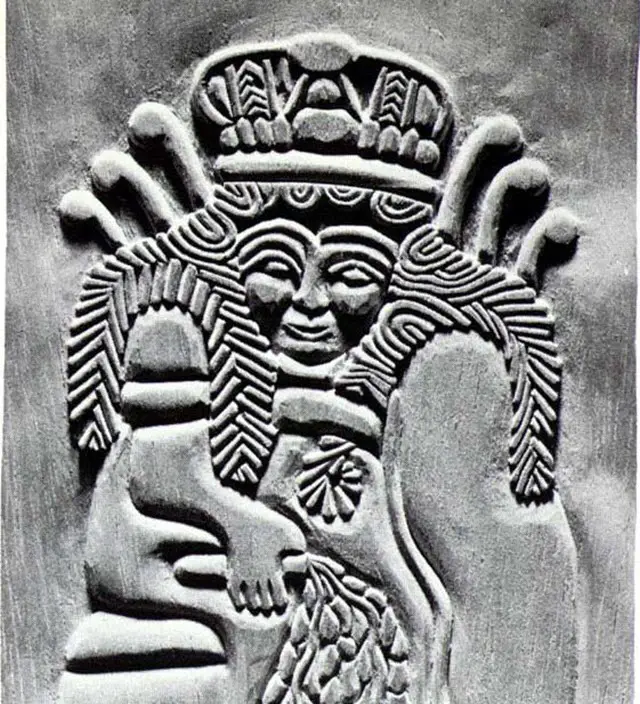
Source: Wikimedia Common
Ninhursag, also known as Mama, Makh, Aruru, Ki, Nintu, or Ninmakh is the oldest goddess of the Sumerian and ancient Mesopotamian pantheon.
Primarily she was given the name Damkina and was associated with fertility. However, her names, along with the association, changed depending on the cities she was worshiped.
People of Sumer worshiped and honored her as she was the creator of divine entities and the mortal ones. She also took care of women and children, higher priority going to pregnant women and very young children.
Like many deities, Ninhursag was mentioned in many myths and tales. A Greek symbol Omega with a knife was used to represent her.
The Omega was used to represent the uterus, whereas the knife was used to cut the umbilical cord. And, the whole of these symbols depicted goddess as the mother.
Conclusion:
Sumer city-state proved to be the most influential cities of ancient Mesopotamia in every aspect. The Sumerians were innovative, impactful, and had deities who were primarily theirs but eventually worshipped by every other city of Mesopotamia.
Other deities which had significant influence and impact on the people of Sumer and other cities of ancient Mesopotamia besides the ones mentioned above are Nammu, Gula, and Ki.
